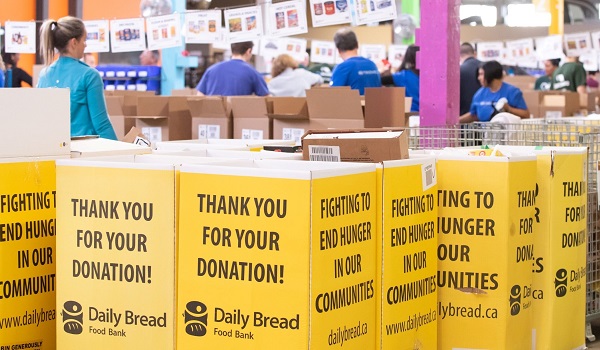Rising tariffs: Trump could trigger a global trade war if re-elected
Tariffs are rising around the world and Donald Trump could trigger a global trade war if he is elected U.S. president in November. The world’s logistics industry knows this only too well, none more than Denmark’s AP Moller-Maersk, the world’s second-biggest container ship company.
Traffic will no doubt slow on certain trade routes if tariffs shoot up. But Maersk does not expect its 700 ships to cross oceans with shrunken cargoes if economic nationalism and “near-shoring” – businesses bringing their supply lines closer to home – gathers momentum in some countries.
In an interview with The Globe and Mail, Charles van der Steene, Maersk’s Dutch-born president of its North American division, including Canada, said today’s supply chains have shown a remarkable ability to adapt quickly to sudden trade friction driven by political factors or crises brought on by climate change or war.
In spite of jacked up tariffs in various countries, he expects Maersk’s business to expand roughly in line with the rise in global GDP this year; the Organization for Economic Co-operation and Development expects unchanged growth of 3.1 per cent this year. Exports to the United States from China are down – they plunged 20 per cent, to US$427-billion, in 2023 – but those from other relatively low-cost countries, among them Vietnam, Thailand, Indonesia and India, are rising.
“The global supply chain we know today has been built over many decades,” Mr. van der Steene said. “We’ll see adjustments, in some cases triggered by political motivations, but we don’t believe it will change fundamentally as a result. For example, in Asia, the ‘China Plus One’ strategy is seeing many of our customers expand their sourcing footprint to Southeast Asia.”
He was referring to the relatively new business strategy of manufacturers investing in other countries besides China to build supply chain diversification.
Maersk was founded in 1904 in Denmark, evolved into a container business in the 1970s and 1980s, and has a market value of US$23-billion. It and its big-name rivals, among them China’s COSCO and Switzerland’s Mediterranean Shipping, have used fleets of ever-bigger container ships and an expanding network of logistics hubs to turn oceans and seas into highways.
Exports from Southeast Asia are surging even as American and European tariffs crimp Chinese exports.
A September McKinsey & Co. report noted Southeast Asia’s rising role in global supply chains. Foreign direct investment in new manufacturing sites in China fell 17 per cent between 2019 and 2023; it rose 20 per cent in Southeast Asia in the same period. “Southeast Asia is emerging as a global manufacturing hub, presenting opportunities for logistics companies,” McKinsey said.
Companies everywhere are building production lines beyond China. For instance, Italy’s Pinarello, a maker of expensive carbon racing bikes, recently added a Vietnamese factory to supplement its Chinese one. The upshot for Maersk and other logistics players is whatever China takes away, Southeast Asia and India will give.
“Pure economic decision-making, with the arbitrage of labour costs and the diversification of supply chains, are forcing manufacturers to look for different ways to get their goods to the West,” Mr. van der Steene said.
Still, there is no doubt that a full-fledged trade war between the United States and China, or the U.S., the European Union and China, could cut trade on some routes. Earlier this month, Mr. Trump said that, if elected, he would impose a tariff of 100 per cent on imports from countries that move away from the dollar.
He had already promised to impose tariffs of 10 per cent to 20 per cent on all imported goods, and as high as 60 per cent on Chinese goods, as part of his America First economic agenda.
The Democrats have embraced tariffs, too. The United States, under President Joe Biden, has placed 100-per-cent tariffs on Chinese-made electric vehicles. Canada did the same in August. The EU has also imposed tariffs on Chinese EVs, though at far lower levels than the American and Canadian ones.
Adapting to tariffs is not the only issue at Maersk. Dealing with natural disasters and wars also requires quick strategic shifts. A severe drought dropped water levels in the Panama Canal last year and into this year, forcing ships to wait weeks to cross. In the Red Sea, attacks on shipping by Yemen’s Houthis have seen logistics companies, including Maersk, divert most or all of their traffic around the Cape of Good Hope, adding nine or 10 days to the journey between Asia and northern Europe.
Mr. van der Steene said the company has been agile in dealing with the Red Sea crisis. It boosted shipping capacity by 6 per cent to 7 per cent to make up for the longer shipping times around South Africa. It also has a fleet of 10 freighter aircraft – “We have our own airline” – that can deliver goods to any customer who needs a crucial product in a hurry.
“The network we have built up goes beyond ships,” he said. “Along with ocean terminals, it now includes trucks, planes, trains and warehouses.
“So, no, we are not really worried about tariffs going up in some countries. If there is a disruption, we can pivot quite quickly from one entry point to the other and still deliver the goods for our customers.”
This article was first reported by The Globe and Mail













